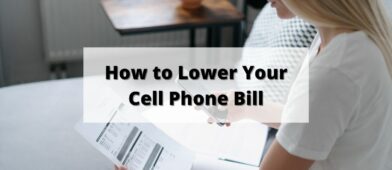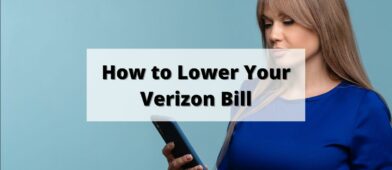Have you ever heard the statistic that the majority of Americans couldn’t cover a surprise $500 emergency expense?
I don’t know whether it’s true but it seems to match up with what know about the average American’s net worth and retirement savings – we haven’t been saving enough.
That said – the statistic is largely unimportant because it’s something for policymakers to worry about.
Whether you can cover a surprise $500 emergency expense is clear – it’s either 100% or 0%.
If you hit a pothole on the way to work and had a surprise $500 repair bill for your tires, could you handle it?
What if there’s a storm and a tree branch hit your roof? Would that repair set you back considerably?
It doesn’t matter if 60% of Americans can’t cover it… it only matters if you can cover it, right?
That’s where an emergency fund comes into the picture. But emergency funds don’t just grow on trees and while you save towards an adequate amount, you need to have a few alternatives in your back pocket in case bad luck strikes before you’re fully funded.
Or it strikes twice in quick succession.
Table of Contents
Before we get into this list, I want to be clear that everyone needs an emergency fund. These these alternatives are all inferior to an emergency fund saved in a high yield savings account. Or maybe a CD ladder.
These are all alternatives you can turn to as a stop-gap measure while you are replenishing your emergency fund.
Credit Cards
This is the worst. This is the worst for a few reasons:
- Very high interest rate
- Easy to fall into the debt spiral
- It’s a false sense of security
If you have a credit card, you might think you have your credit limit as an emergency fund. That’s until you realize the interest rate on the card is massive. They’re often high double digits.
If you have a $500 credit card balance and pay $25 a month, it’ll take you two years.
If you pay $10 a month (2% is often the minimum), it’ll take you 94 months! (with $431 of interest!)
These are extreme examples but what if you get hit with back-to-back emergencies? What if you are hit with a greater than $500 expense? A credit card is an alternative but it shouldn’t be your primary backup.
Short Term Loan
Depending on the nature of the emergency, primarily how much time you have, a short term personal loan may be a quick stop-gap measure if you’re in a pinch. The rates and terms will depend on the type of loan you get.
For example, there are cash advance apps that will give you an advance on your next paycheck. This is, in a sense, using your next paycheck as an emergency fund. This may be a good short term answer but not one you want as your permanent solution.
You can look on a marketplace like Monevo to shop for rates and terms on a loan that ranges in size from $1,000 all the way up to $100,000. The rates will be competitive and way better than what you’d get with a credit card.
Home Equity Line of Credit
This is probably one of my favorite alternatives to an emergency fund but it’s not available to everyone – you have to own a house and you must have equity in that house.
This is great if you have enjoyed a period of home value appreciation or you had to put down a large down payment, so you have built in equity, but those who rent are out of luck. Sorry. 🙁
If you can open a home equity line of credit (HELOC), you want to set it up as soon as possible. Home equity lines of credit are still bank instruments so they will take some time to set up and you don’t want to try to do it when you have the emergency.
When you open a HELOC, you’ll have to pay closing costs that include an application or origination fee, a notary fee, title search fee, appraisal fee, credit report fee, as well as attorney or document preparation fees and a recording fee. Some banks will waive a lot of those fees but there are still ones you can’t escape, like the recording fee that goes to your local taxing authority (county, city, etc.).
A HELOC can also have other fees every year, even if you never use the money, so make sure you compare these all when you pick a lender.
401(k) Hardship Distribution or Loan
I chose to lump these two together because they share the same funding source, a 401(k) retirement plan, but are two different means of accessing the funds.
With a hardship distribution, you are withdrawing money from your 401(k) and you don’t pay it back. You can’t pay it back. You have to face an “immediate or heavy financial need,” as determined by your employer, and many emergencies would qualify (such as medical expenses). With a hardship distribution, you will owe income taxes on the amount plus a 10% penalty.
With a 401(k) loan, you’re borrowing money from your 401(k) account with the expectation that you pay it back, with interest. What’s nice is that you aren’t taxed on this as long as the loan meets all the rules and you repay it as scheduled. This is also only available if your plan employer allows it..
Roth IRA
I’m not sure if this one is worse than credit cards but it should be considered as a last resort. The money inside a Roth IRA can sometimes be withdrawn without penalty, known as a qualified distribution, if you meet some criteria.
The criteria can get a bit complicated but the basic gist is that you have to be over 59½ and the funds have to have been contributed at least five years ago. If you don’t meet these rules, you may face a penalty of paying ordinary tax on earnings and potentially a 10% penalty on your earnings.
(you can withdraw contributions any time, tax and penalty free)
There are some exceptions where you can get access to the money without paying a penalty (without meeting any of the other rules) and those including if you become disabled or die and if you use the funds to pay unreimbursed medical expenses or health insurance when you’re unemployed. (there are others but those are the emergency related ones)
It’s a last resort because the Roth IRA is such a great investment vehicle that you really want your money working in there as long as possible.
Conclusion
The best approach is to have an emergency fund but that’s not always possible or not possible immediately. If you are building up your emergency fund, having one of these as a back up is better than not having a plan should an emergency take place.



